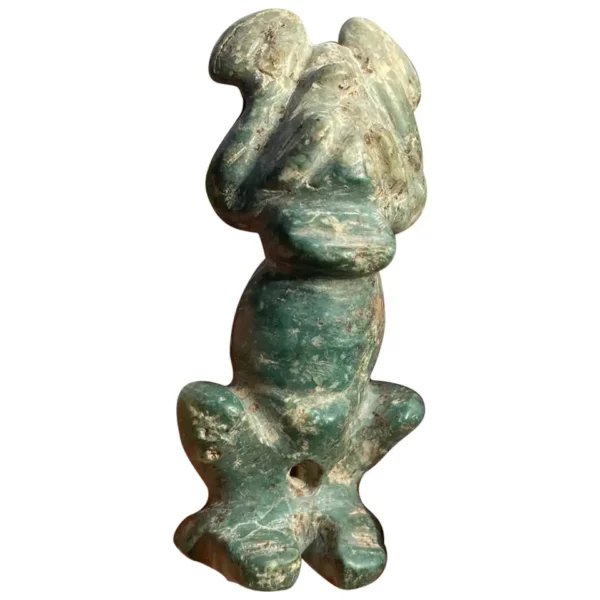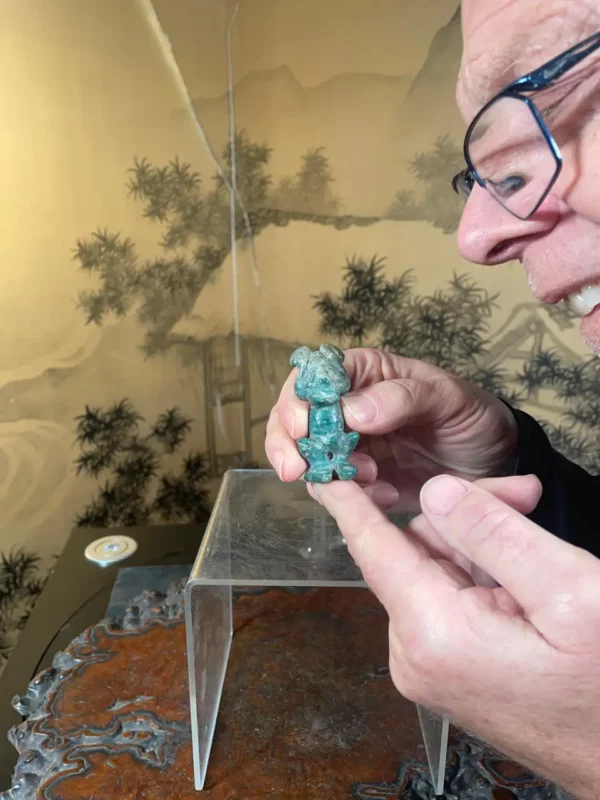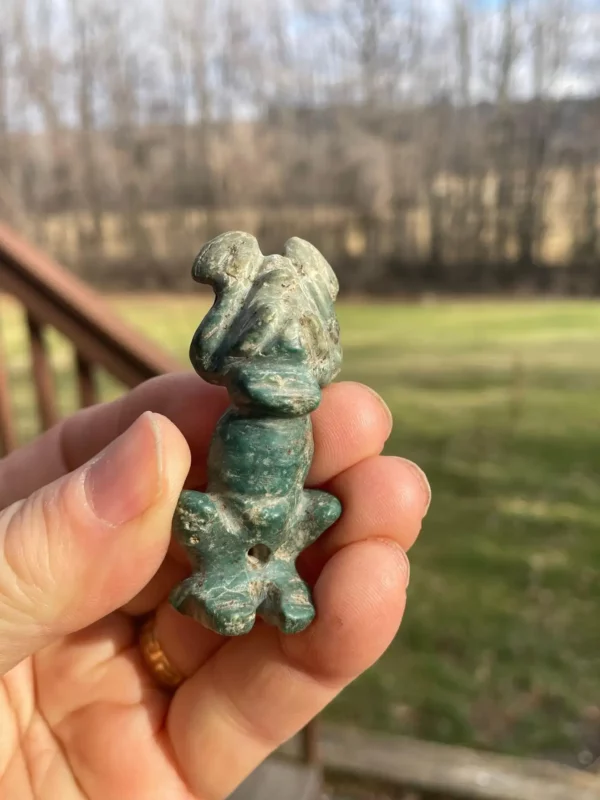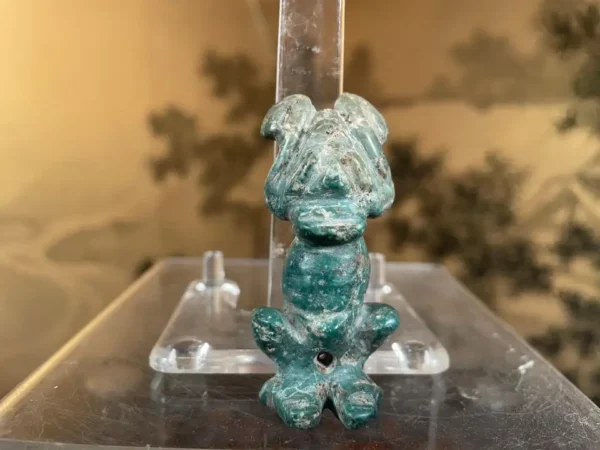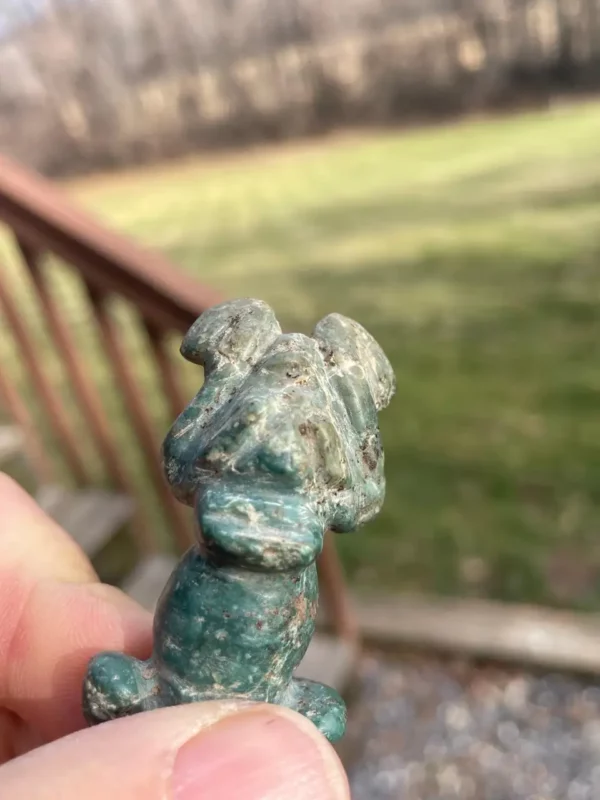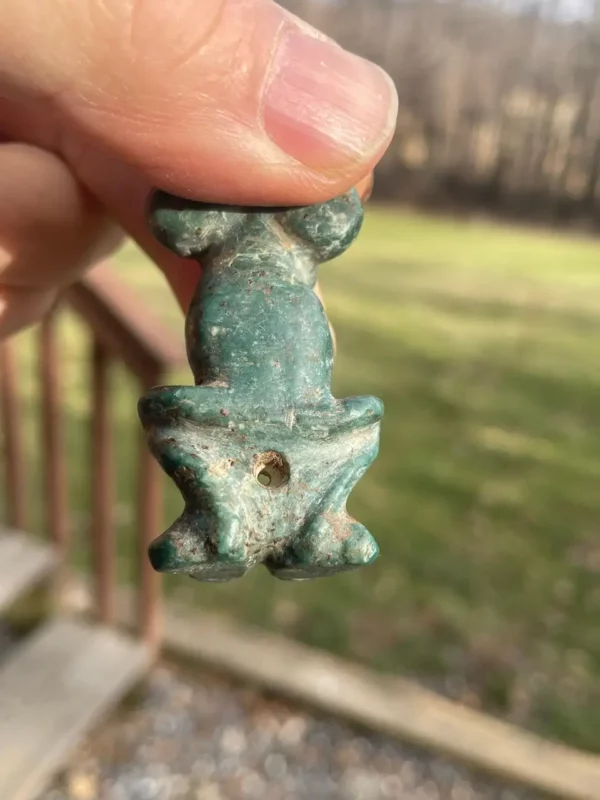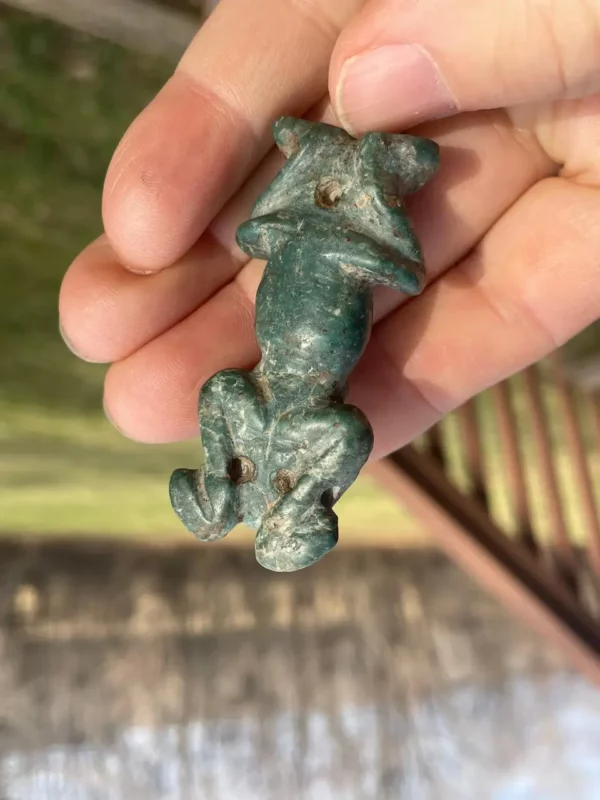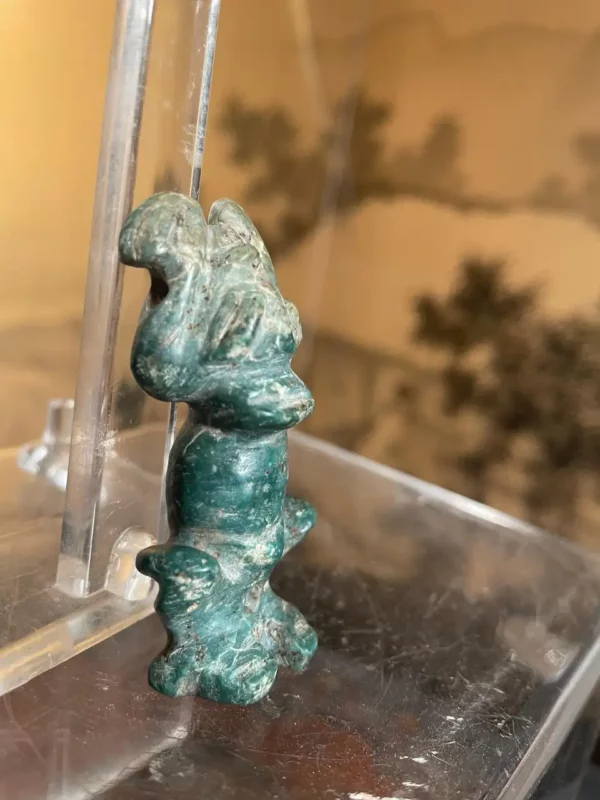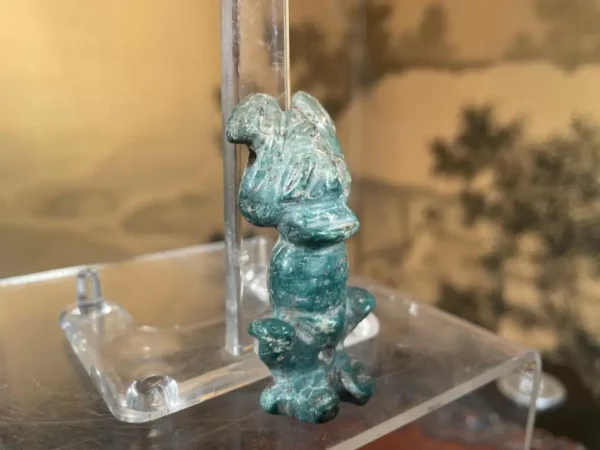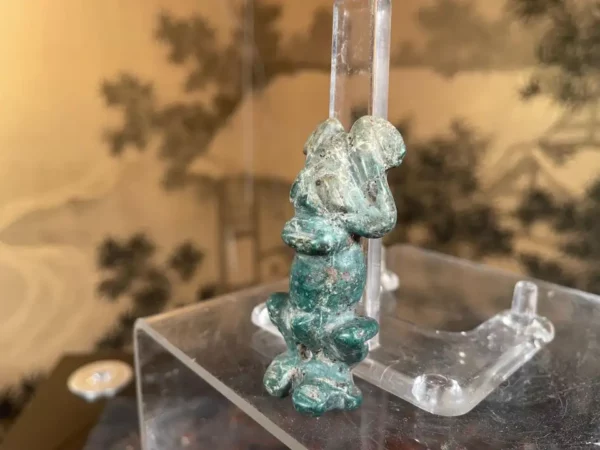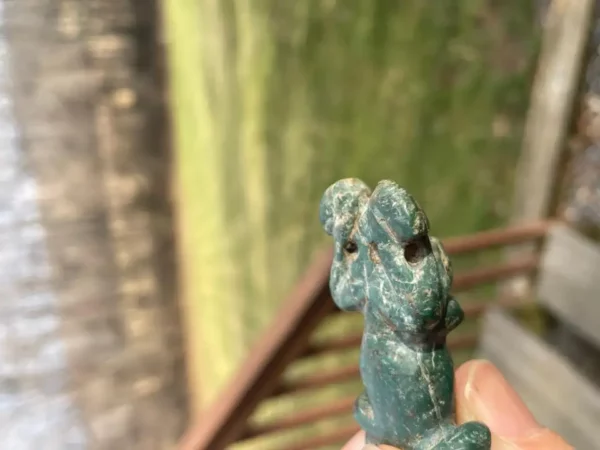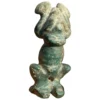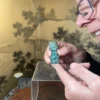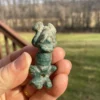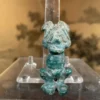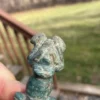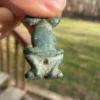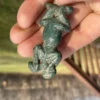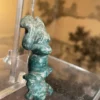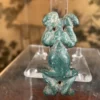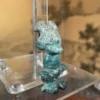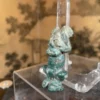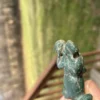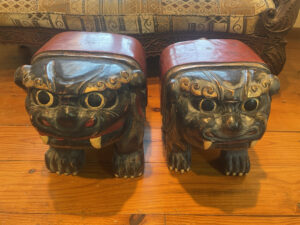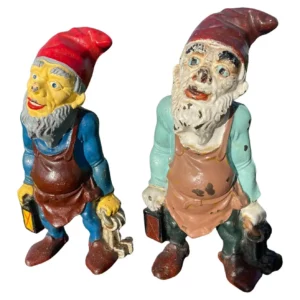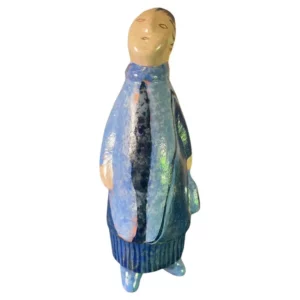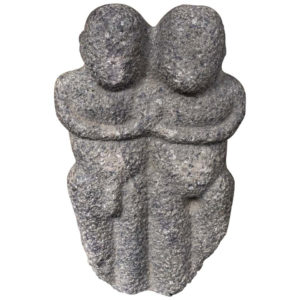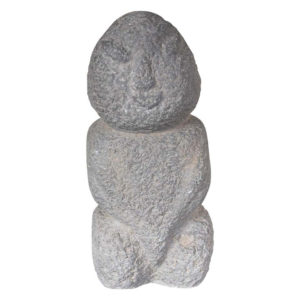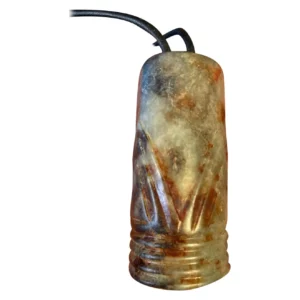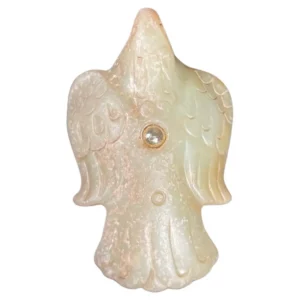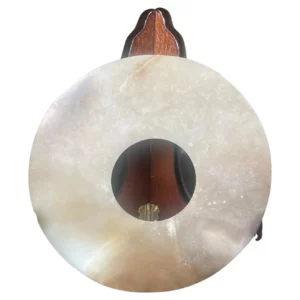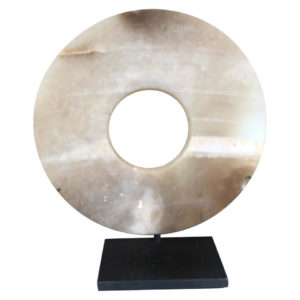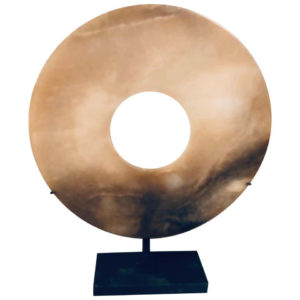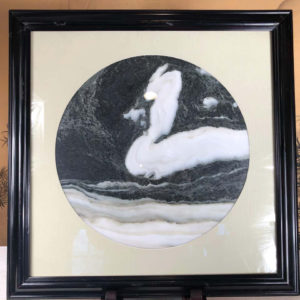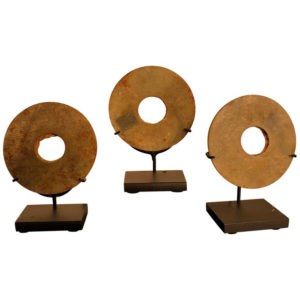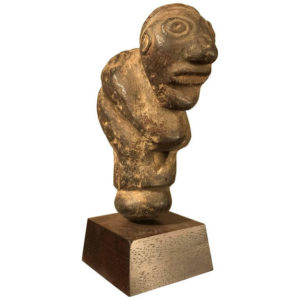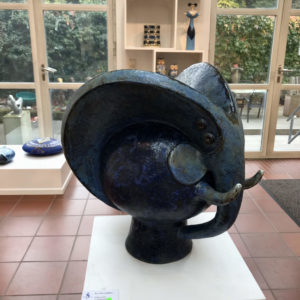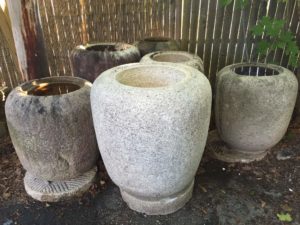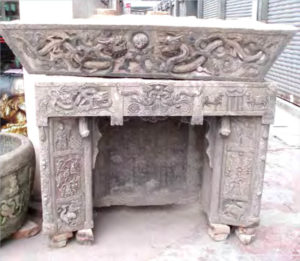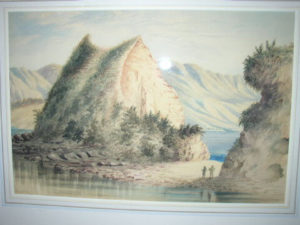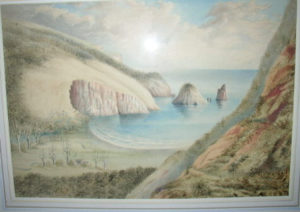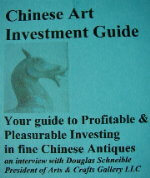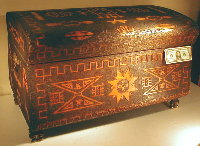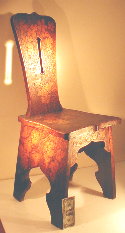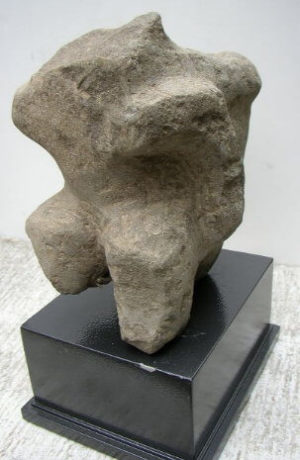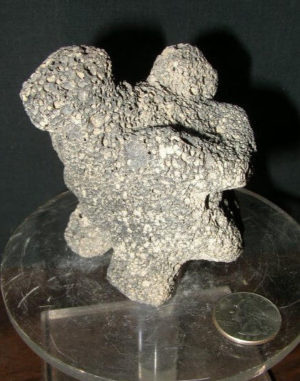American Taino Encrusted Blue Jade Fertility Figure, 2.5″h
$475.00
Sold Out
Lifetime GuaranteeEmail to a friend
Pre-Columbian, Hispaniola, Arawak peoples, Taino native Indians
Rare blue green colored jade with original old pierced holes for a pendant mount
Taino Jade Anthropic male “fertility” figure
This is a fine hand carved jade ancestor sculpture from the Arawak Peoples of the Greater Antilles Islands, Dominican Republic. It is a choice example.
Taino jades are uncommon due to lack of local island jade cobble resources. Jade was likely traded into this country hundreds of years ago and this work of art is just one of a small collection found in a cave in LaAltagracia Provonce, Dominican Republic in 1958.
Dimensions: 2.5 inches high
Sometimes described as a jade -cemi- this work of art belongs to a broader category of Taino art also called -zemis-. This term refers to the physical incarnation of a Taino god, spirit or ancestor. This figure may represent a Taino in trance and might have adorned Cohoba ceremonies where hallucinogenic substances like cohoba were consumed to induce trances to communicate with the gods. It features decorative tattoo on the head top while the figure maintains a meditative pose.
While the precise function of such objects remain somewhat a mystery- they continue to impress us with their bold abstract form and magical associations.
This remarkable sculpture figure is carved in a lovely blue green jade with brown encrustations and inclusions. This quintessential and rare example has a large ovoid formed head, slanted eyes, hands behind head, prominent nasal, wide open mouth, and promient feet.
As chieftains and important shamans were deified after death this sculpture may represent a cacique chief or high status member of Taino Community.
The arrangement of the figure’s limbs is an elaboration of the ritual squatting position that zemis assume in surviving stone amulets. In this case the legs are held up vertically with the feet resting under the waist. Both the face and in particular, the back of the body, are skeletal in appearance with prominent hollow joints. The wide eye-sockets and gaping jaw are deeply carved and both the forehead and the chin project outwards at a sharp angle. The emaciated look on the reverse, is carved in the half round. Both the ribs and the spine are indicated, set between elaborate geometric motifs which may indicate the presence of tattoos. The figure appears to rests on a simply carved pedestal.
Hand carved. A scarce work of art from America’s Caribbean islands.
Provenance: 1958 Cave cave find, La Altagracia Province, Dominican Republic.
Taino history:
The Taino flourished from 1200-1500.
When Columbus arrived in America, the first people he encountered were the Taino People- inhabitants of the islands of the northern Caribbean Sea, known as Hispaniola. They were Arawakan-speaking people who at the time of Christopher Columbus’s exploration inhabited Cuba, Jamaica, Hispaniola (Haiti and the Dominican Republic), Puerto Rico, and the Virgin Islands. Once the most numerous indigenous people of the Caribbean, the Taino may have numbered several million at the time of the Spanish conquest in the late 15th century.
Their highly developed belief system focused on zemi ancestor or god worship. A zemi was the physical manifestation of a god, spirit or ancestor. The chieftain -caciques- encouraged ancestor worship and were often deified after death. The religious leaders or shamans were thought to be able to communicate with the souls of the dead when intoxicated by the hallucinogenic cohoba. A preoccupation with death is evident in many Taino art-forms and partly explains the prevalence of zoomorphic images. Bats, owls and frogs were all popular motifs and were regarded as harbingers of life after death. The Taino believed that the dead could be reborn in animal form and some believe animals were their earliest ancestors in Taino creation myth. Hence we find their zoomorphic sculptures as combinations of human and animal forms particularly provocative and great conversational art. The creator god was known as Yúcahu Maórocoti, encouraging growth of staple foods, like cassava. The goddess was Attabeira, who regulated and dominated over water, rivers, and seas.
Their contribution to the Spanish includes Indian corn, tobacco, rubber balls to unique art and artifacts, plus a new vocabulary. Importantly, the Taino lasting effects on Western civilization, though through brief contact, was an important and lasting one and continues to this day.
We have been collecting and dealing in authentic American Art, Folk Art and pyrography works of art for more than twenty five years. Our president has authored informative articles on collecting pyrography and has amassed a fine large collection which is now being deaccessioned. He personally inspects each antique work of art to ensure its old age, authenticity and quality condition.
Item Details
- Dimensions: N/A
Related Art
(802) 279-7601
(802) 279-7601
(802) 279-7601
(802) 279-7601
(802) 279-7601
(802) 279-7601
(802) 279-7601
(802) 279-7601
(802) 279-7601
(802) 279-7601
(802) 279-7601
(802) 279-7601
(802) 279-7601
(802) 279-7601
(802) 279-7601
(802) 279-7601
(802) 279-7601
(802) 279-7601
(802) 279-7601
(802) 279-7601
(802) 279-7601

